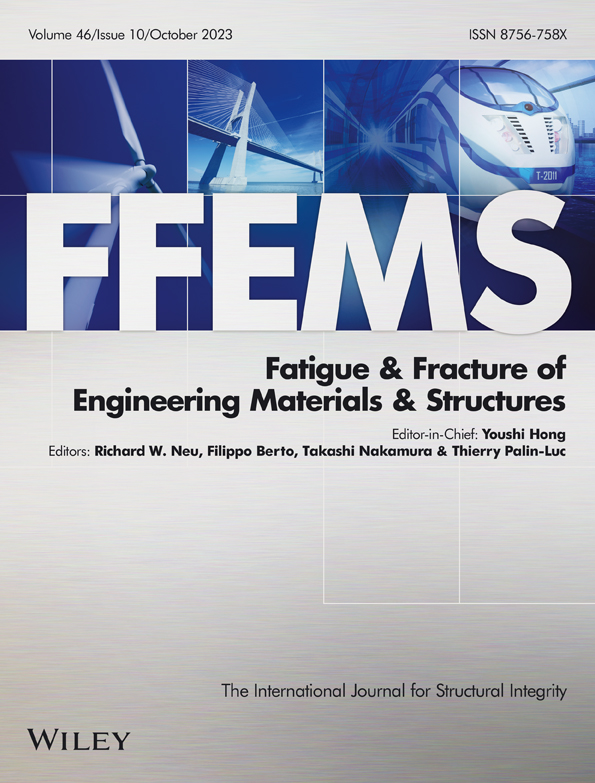Effect of stress amplitude on damage and fracture characteristics of austenitic heat-resistant steel Sanicro 25 at 973 K
Abstract
High-temperature damage characteristics related to the deformation behavior of Sanicro 25 alloy were investigated under stress-controlled cyclic loading. The results show that the strain curves exhibited creep-like strain characteristics. The increase in mean stress increased the strain rate and weakened the life. Comparatively, the increase in stress amplitude only accelerated the tertiary-regime strain rate, leading to a decrease in life and fracture strain. Microcrack initiation at grain boundaries and primary Z phases at different stress amplitudes can be evidenced by the observation of micro-voids and high geometrically necessary dislocation densities around them. Subsequently, the increase in stress amplitude can significantly affect crack propagation. Dislocation accumulation at the transgranular crack tip caused by cyclic stress can assist the propagation of the transgranular crack at higher stress amplitude ( ). Conversely, transgranular cracks are easily suppressed and stop propagating at grain boundaries under constant loading ( ). The main reason was that the stress concentration of the transgranular crack tip at grain boundaries was dissipated through discontinuous dynamic recrystallization.
Highlights
- The HT damage evolution characteristics related mechanical response was investigated.
- Acceleration of creep-dominated third-regime strain rate by stress amplitude is revealed.
- The change of stress amplitude affected damage characteristics was discussed using EBSD.
- The cracking propagation mode was affected by the DDRX of transgranular crack tip at GBs.
CONFLICT OF INTEREST STATEMENT
The authors declare that they have no conflict of interest.
Open Research
DATA AVAILABILITY STATEMENT
The data that support the findings of this study are available from the corresponding author upon reasonable request.




